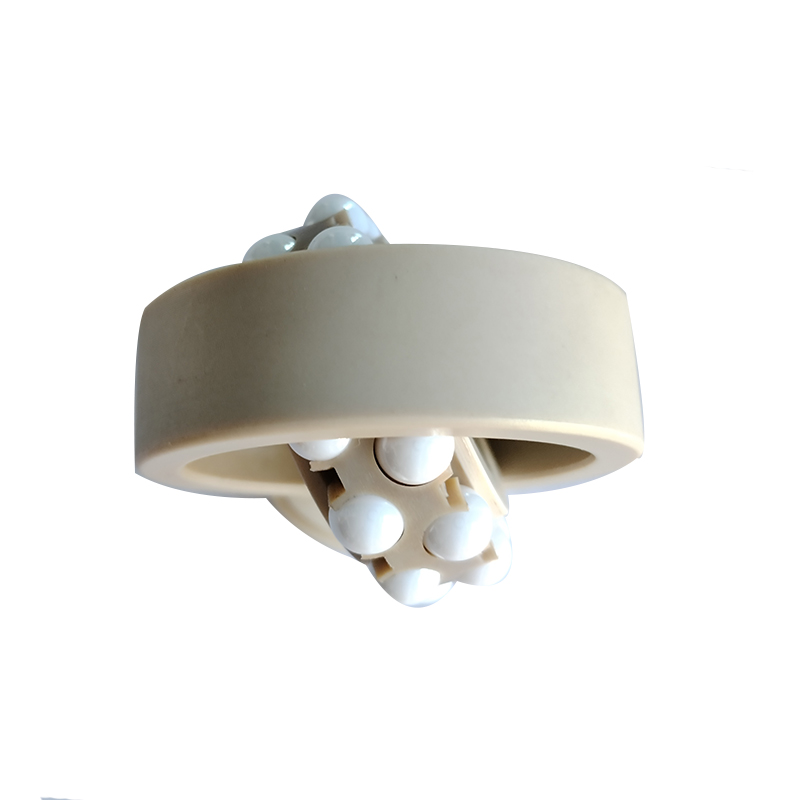Jul . 24, 2024 02:21 Back to list
Exploring the Applications and Benefits of Spherical Plain Shaft Bearings in Modern Engineering Solutions
Understanding Spherical Plain Shaft Bearings
Spherical plain shaft bearings, often referred to as spherical bearings or rod ends, are specialized components designed to allow for rotational movement and angular misalignment in machinery. They are integral in applications where rigid bearings would be inadequate due to the need for flexibility and adaptability. This article explores the design, functionality, advantages, and applications of spherical plain shaft bearings.
Design and Structure
Spherical plain bearings consist of an inner ring with a spherical convex surface and an outer ring with a corresponding spherical concave surface. This unique design allows the inner ring to pivot within the outer ring, accommodating misalignment in both axial and radial directions. Typically constructed from high-quality materials like steel or bronze, these bearings are often treated for enhanced durability and wear resistance. Various types of coatings, such as non-conductive or corrosion-resistant layers, can also be applied depending on the application environment.
Functionality
The primary function of spherical plain shaft bearings is to facilitate movement in machinery while supporting radial and axial loads. They can be classified into two major types maintenance-free and maintenance-needed bearings. Maintenance-free spherical bearings usually feature a self-lubricating lining, such as PTFE or other polymer composites, which minimizes friction and wear, making them ideal for applications where regular maintenance is impractical.
The ability of these bearings to accommodate angular deviations makes them particularly suitable for applications that experience vibration or shock, as they effectively distribute loads and reduce stress on adjoining machinery components.
Advantages
spherical plain shaft bearing

Spherical plain bearings come with numerous benefits. Their ability to handle misalignment is a significant advantage in applications where perfect alignment is challenging to achieve. This capability helps maintain the longevity of associated machinery and reduces the frequency of breakdowns.
Another advantage is their capacity to operate efficiently in extreme conditions—whether under heavy loads, high speeds, or temperatures. The robustness of these bearings makes them suitable for industries such as construction, aerospace, and automotive, where reliability is paramount.
Moreover, the simplified installation process is noteworthy. Many spherical plain bearings feature eyelets or threaded ends that allow for quick attachment to other components, reducing assembly time and promoting ease of use.
Applications
Spherical plain shaft bearings are utilized in various industries and applications. In the automotive sector, they are commonly found in suspensions, steering systems, and even in drive shafts, where they allow for the necessary range of movement while maintaining stability. The aerospace industry utilizes these bearings in control systems and landing gear, where precise movement and the ability to withstand harsh environments are crucial.
In construction and heavy equipment, spherical bearings are employed in booms, cranes, and linkages, where they facilitate movement and adjustment under heavy loads. Additionally, they are also used in agricultural machinery, robotics, and industrial machinery—demonstrating their versatility across numerous fields.
Conclusion
In conclusion, spherical plain shaft bearings are invaluable components in modern machinery and equipment, contributing to improved performance, reliability, and efficiency. Their unique design and adaptability make them ideal for applications where traditional bearings fall short. As industries continue to evolve and demand greater efficiency, the role of spherical plain bearings will undoubtedly expand, solidifying their importance in engineering and manufacturing processes.
Latest news
-
High Quality 6319 2RS Deep Groove Ball Bearing 95x200x45
NewsAug.18,2025
-
UCT205-15 Take Up Housing Pillow Block Bearing | Reliable
NewsAug.17,2025
-
CKZ-A Sprag Type Freewheels One Way Clutch - High Performance & Reliable
NewsAug.16,2025
-
ASNU 12-35 NFS TFS Roller Freewheel One Way Clutch Bearings
NewsAug.15,2025
-
Durable AK208 Pillow Block Housing | Reliable Bearing Support
NewsAug.14,2025
-
28.6x80x36.53mm W208PPB5 Heavy Duty Disc Harrow Bearing
NewsAug.13,2025